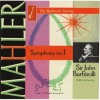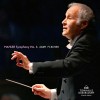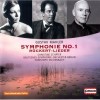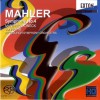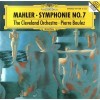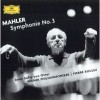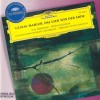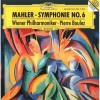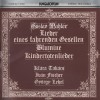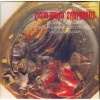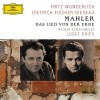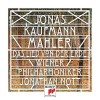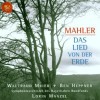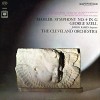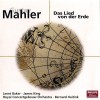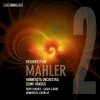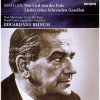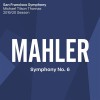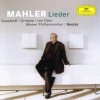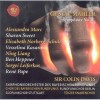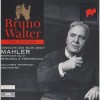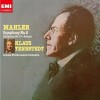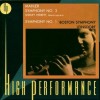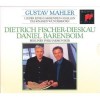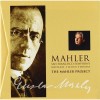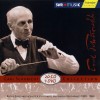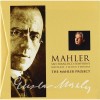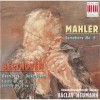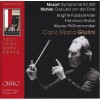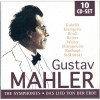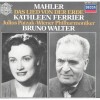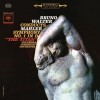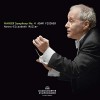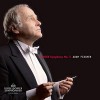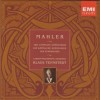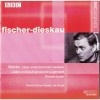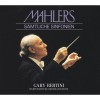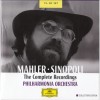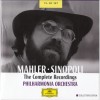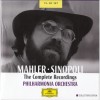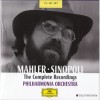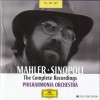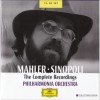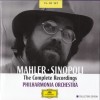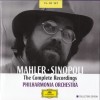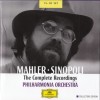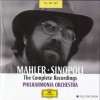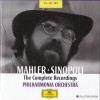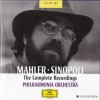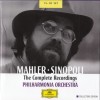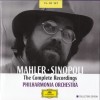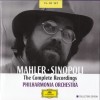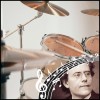Composers
Gustav Mahler was born in a German-speaking Jewish family of Bohemia in the Austrian Empire (the today’s territory of the Czech Republic). He was one of fourteen kids, one of those lucky six who survived infancy. Soon after his birth his parents went to live in Jihlava (German Iglau). There the future composer would spend the most of his childhood. His parents noticed Gustav’s extraordinary capabilities and music inclinations, and had him take piano lessons at the age of six.
Fifteen year old Mahler was accepted to the conservatory in Vienna (Vienna Conservatoire) in 1875. Among his teachers were famous Julius Epstein, Robert Fuchs and Franz Krenn, who taught him piano, harmony, and composition accordingly. In 1878 he attended the lectures of Anton Bruckner at Vienna University. There Mahler not only studied history, philosophy and music, but also gave music lessons himself. He even participated in the competition, with Johannes Brahms at the head of a jury. But his cantata failed to gain the first prize.
From 1880 the career of Gustav Mahler developed majorly around his conductor activity. He started at the moderate Bad Hall, and then proceeded at the larger theatres and opera houses of Ljubljana (1881), Kassel (1883), Prague (1885), Leipzig (1886). In later years Mahler enjoyed great success among music fans as well as critics by conducting Der Ring des Nibelungen by Wagner and Die drei Pintos by Carl Maria von Weber. And even Brahms praised Don Giovanni, conducted by Gustav Mahler. This all not only brought him infatuation of the public, but financial stability as well. Having left Budapest, where he worked in 1888, he was bound for the Hamburg Opera (He worked here from 1891 until 1897). In 1895 Mahler’s younger brother committed suicide. His brother Otto was only 21 years old and he was a composer, just like Mahler himself.
His summer vacations in Steinbach am Attersee (Upper Austria) in the period between 1893 and 1896 were very fruitful for Mahler as a composer. He resumed his work on the Symphony №1, №2 and Symphony №3. He also wrote the collection of songs “Lieder aus "Des Knaben Wunderhorn", primarily based on the famous set of folk-poems.
In 1897, Gustav Mahler accepted the governance over the Vienna Opera, which was considered to be the most honored musical post in the whole Austrian Empire. There seemed to be no obstacle of Mahler’s appointment, but for his origin. According to the Austrian law, no Jew could occupy this 'Imperial' post. For Mahler though it didn’t seem to be a problem; on the one hand, he has never been engaged in practicing Jew, on the other, as a means of precautions or largely due to his devotion to the religion, he took Roman Catholicism. Catholicism had great impact upon Mahler and this is clear from his music, for example, Mahler used the religious anthem "Veni Creator Spiritus" while creating the Eighth Symphony. Though critics find enough evidence of the Jewish spirit intact in his symphonies.
The revised Symphonies № 2 and №4 by Schumann were conducted by Gustav Mahler first in 1899 and then in 1910.
After 10 years of his directorship, he transformed the repertoire of the Vienna Opera and raised its standards to the unprecedented level, bending both listeners and performers to the conductor’s will. He turned from Manon, Cavalleria rusticana and Lohengrin, works popular at that time, to the operas by Wolfgang Mozart and Christoph Gluck, and with assistance of the moderately famous painter Alfred Roller, created a transfixing, visionary production of Tristan und Isolde, Der Ring des Nibelungen, and Fidelio.
Mahler was in the middle of the bohemian atmosphere of Vienna, which at his time was among the biggest and liveliest cities of the world. It bestowed some of the most talented representatives of creative and intellectual scene, for example, the famous painters Egon Schiele and Gustav Klimt. Mahler had a lot of acquaintances among intellectuals and artists of Vienna.
Mahler’s work was divided between the Vienna Opera, where he worked for about nine months annually and various composing huts (komponierhäuschen), where he passed summer months brooding creative thoughts and composing. The idyllic atmosphere of Maiernigg am Wörthersee instigated the appearance of the Kindertotenlieder (or Songs on the Death of Children) and Rückert Lieder, both based on Friedrich Rückert’s poems, as well as Der Tamboursg'sell.
In 1901, Gustav Mahler moved into his new villa in Maiernigg on the lake in Carinthia. In 1902, he married the stepdaughter of Carl Moll, the famous Viennese painter - Alma Schindler. Mahler was twenty years senior than his spouse, but it did not seem to be a barrier for their family life, as she gave birth to two daughters. One of them, Maria Anna died in 1907 of diphtheria being only four years old, and the second, Anna Justine (1904– 1988) chose the profession of a sculptor.
Although Alma Schindler was a composer and a musician, Mahler put it straight, that she was not to exhibit her creative efforts and only tend to his demands. This period in composer’s life was not of the happiest ones. First, his small daughter’s death, and then his own illness. Doctor Emanuel Libman from New York’s hospital diagnosed Mahler with infective endocarditis (a heart disease) and restricted him from much physical exercising. He was also supplied with a pedometer to count steps he made. In theater matters Gustav Mahler was renowned for his obstinacy and often tenacious unwillingness to yield, what could not but bring him enemies. He also became an increasingly convenient victim for anti-Semitic attacks in the press. In the long run, no one was surprised when in 1907 he left the Vienna Opera.
Mahler’s own works were not favored by critics, for whom his symphonies were ‘potpourris', the indiscriminate mingle of topics of "disparate" periods with traditional themes. The composer’s juxtaposition of elements from “high” culture and “low” culture, the interfusion of ethnic traditions, very often affronted conservative public at a time of rapid growth of workers’ unions, and conflicts between Czechs, Germans, Jews and Hungarians in the country were creating instability and anxiety. However, Mahler always had vociferant admirers who were ready to stand up for their idol. In later years Gustav Mahler enjoyed significant success with a wide public, especially with the Second Symphony staged in Munich in 1900. The Third Symphony (performed in Krefeld), Viennese presentation of the Second Symphony in 1907 and some other works also received a warm welcome from the audience. Though lots of pieces he composed after that were not performed until his death.
The final incentive for the composer’s departure from Vienna was a grandeous offer made by Metropolitan Opera. He conducted an orchestra there in 1908, but was put aside because of Arturo Toscanini, who had been popular with the audience at that time. But once the curators of the board favored him no more, the Metropolitan trustees preferred to get rid of Toscanini in favour of Gustav Mahler.
In 1910, Mahler faced crisis of his family life and had to consult notorious Sigmund Freud on the problems of his wife’s infidelity. He was apparently given helpful and comprehensive consultation on the matter, as the family crisis had been overcome, and Mahler decided to return to America. There the conductor signed a long-term contract with Philharmonic Orchestra of New York. In this period Mahler completed Das Lied von der Erde, the Symphony №9, and worked on his Symphony №10 which remained unfinished after his death. In 1911 in New York he fell ill during a protracted and stressful concert season, which included the premiere of Berceuse élégiaque by Ferruccio Busoni. Mahler was diagnosed of blood infection and had to conduct the last concert being in fever. After an unsuccessful attempt to cure his disease in Paris with the help of a new developed serum, he requested to return to Vienna in 1911, where fifty year old Mahler died there on 18 May.
Mahler was buried in Cemetery at Grinzing (outside Vienna), beside his dear daughter. In obedience to the last wishes of this great man he was buried in muteness, with no pomp, and a simple gravestone bearing his name was put near an inelaborate Jugendstil monument. Bruno Walter, his close friend used the words “immense crowd” and “dead silent” to describe the ceremony of Mahler’s burial. According to him, a great storm broke when the coffin was laid in Grinzing Cemetery, it rained immensely so that the crowd could hardly proceed. But when they lowered the coffin into the grave the sun appeared in the sky.
According to Alma Mahler, the conductor and composer never felt himself to be welcomed, and even called himself an intruder. A thrice homeless man, a child of Bohemia, a Jew and an Austrian. His words remind of the remarks made by another Jew Anton Rubinstein, and could have been used by Mahler, who liked their appositeness.
After the conductor’s death his prolific wife became engaged in publishing material about Gustav Mahler’s life and music. The materials she offered were criticized as being misleading, false, and unreliable. She was often prejudiced toward her husband, often described him in a way, different from historians and musicologists, what engineered the appearance of "Alma Problem" phenomenon.
Gustav Mahler is considered as one of the greatest German symphonists, probably the last one. He aimed at expanding the breadth and scope of the symphonies to the unreachable dimensions, thriving “to embrace the world” in a symphony. This spread of scope becomes evident not only from the length of the composition, but is also seen in the climax of orchestral intensity.
As a representative of Viennese school, he extended from Mozart, Haydn, Schubert and Beethoven to the representatives of Romanticism Brahms and Bruckner; he also absorbed the concepts of other Romantic composers of non-Viennese school, such as Felix Mendelssohn and Robert Schumann. But Wagner was praised by Gustav Mahler above all the composers. Mahler believed, that only Richard Wagner (if to put apart Ludwig van Beethoven) had achieved true “development” in music and composition.
Two genres fell in the focus of Gustav Mahler’s attention: song and symphony, although Totenfeier (the original version of a movement from the Symphony №2) or Das Klagende Lied (the famous cantata) would seem to be an exception. Apart from his nine numbered symphonies, his main works are several cycles of songs, such as Lieder eines fahrenden Gesellen and Kindertotenlieder.
If to take a precise look at his music legacy, his works seemed to be created to outline the frames of traditional genres and blur the border between them. He aimed at creating not the symphonies with programmatic content, but "symphonic poems", and he stated his first symphony "Titan" to be of the kind. But nevertheless, his symphonies of the first period lacked that "absolute music" ideal exemplified in the works of Brahms and so precisely exposed by Hanslick.
The Symphonies №2-4 employ texts and vocal soloists. The eight Symphony in contrast expands what is considered to be the notion of a symphony; this symphony is a unique network of multiple choirs with 8 soloists, the combination of the sacred texts with secular ones; the whole grandiose structure characterizes Mahler’s maximalist nature of a creator. Some other multi-movement orchestral performances are also called symphonies, but despite the wish of the author they are not exactly of the kind.
The idea of the song (German das Lied) is engrained in his works. Taking after Robert Schumann and Franz Schubert he developed a song cycle, though he preferred to orchestrate it instead of writing piano accompaniments. In the center of Lieder eines fahrenden Gesellen (a collection that includes four songs) is a lover unambiguously rejected by a beloved woman. Mahler’s own unsuccessful love affair with a singer from Kassel inspired him to write a symphony about a lonely man who wonders alone round the earth.
Keenly enthusiastic about the orchestra colourations and aware of its variations, Gustav Mahler made his symphonies ample with fine melodies and harmonies full of expression and variety, achieving vivid tonal qualities with the help of clarity of the melodic lines. His other novelties which enriched music language include the use of instruments both, in large and small scales, introduction of percussion in large amounts, combining chorus and voice to symphonic pattern. His orchestra style was founded on counterpoint; one melody would start off a previous one seemingly simultaneously, thus preferring clarity over the sound mass.
Very often the spirit of peasant dance and song had been felt in his works. The Symphony №9 is an example of a famous 'dance movement' and exemplifies the transformation of the Ländler- the folk-dance of Austria, into the minuet and then to the waltz. Waltz, minuet and the Ländler figure in several of Gustav Mahler’s symphonies.
Mahler as a composer combined the concepts of Romanticism, with its view on program music with ample use of peasant song tunes in the symphonies of his own, including the recourses of the symphonic orchestra. In the long run, he aimed to break, or at least extend the existing symphonic forms, as he sought the means to amplify his music. Mahler claimed the symphony to be the "entire world". In the end he had to make revision of the orchestration nuances till the composer was contented with the outcome.
Mahler was a spiritual man and often described his musical works using the term “nature”. And his music was viewed as exceedingly emotional long after the death of the composer. On the one hand, he was restlessly seeking for ways to extend the symphonic expression, on the other, he was an avid craftsman, what is evident from his precise working methods, as well as meticulous planning, and studying of the previous authors.
The harmonic writing of Mahler was often highly innovative, extending the boundaries of traditional tonality. Still, the tonality, as a constructional and expressive principle, was definitely of great importance to the composer. This is evident from Mahler’s approach to 'progressive tonality'. He wrote the First Symphony in D major, the Second Symphony evolves from the first movement in C minor to E major conclusion; the beginning of the Symphony №3 develops from a D minor first movement to F major, and then follows the D major of the finale; the G major Symphony №4 in turn ends in a transparent E major.
The Symphony №5 intensifies the progress, evolving from a sharp C minor funeral marching, through a conflict-ridden movement of A minor, a vigorous D major movement, and an 'Adagietto' of F major, to a D major triumphant finale. While the Symphony №6, by contrast, has an A minor beginning and A minor ending. The Symphony №7 is tonally 'progressive', where the first movement is characterized by B minor beginning and E major ending, and the finale is defined by celebratory radiance of C major. Mahler’s expressive intentions to create a work with E-flat beginning and ending are exemplified by his Eight Symphony, while the Symphony №9 evolves from a first movement in D major to a major finale in D-flat. The Tenth Symphony begins and ends in F major.
Mahler's symphonic legacy is conventionally subdivided into major three 'periods'. First four symphonic works were written under the impression of the Wunderhorn verses, and belong to the 'first period'. The First Symphony employs a melodic form rendered in Gesellen songs in the first movement, as well as an extract from another in the key part of the third movement.
Wunderhorn song provided the Symphony № 2 with a flamboyant setting and orchestral amplification, and its extension embodies one of the movements of the symphony. And it also served as a setting for the third movement from the Symphony №3, creating an incredible orchestral fantasia, and the fifth movement is presented in a Wunderhorn scene composed for this symphony. The finale of the Symphony № 4 is also a Wunderhorn setting, and its elements are prefiguratively included into the first movements.
The 'second period' of Mahler’s creative activity is marked by the appearance of the following symphonies (№5 to №7), which manifest an increase of expression severity and the composer’s interest in unusual, and often exotic instrumentation. In the symphonies of the first period he also used a non-standard post horn. Still, his later use of unusual instrumentation is striking indeed. He employed a whip in his Fifth Symphony; a hammer, cowbells, and deep bells in the Symphony № 6; and a tenor horn, cowbells, mandolin, guitar and cornet in the Symphony № 7.
Oddly, but though the 'second period' symphonies do not have a vocal component, Mahlerian songs dimly appear in the first movement in the Symphony №5 and a slow movement in the Symphony №6, where the listener can easily hear the extracts from the Kindertotenlieder, and the Fifth Symphony finale comprises ideas of the song 'Lob des hohen Verstandes’ (1896).
Mahler's 'third period' embraces the symphonies № 8, 9, 10 and the renowned Das Lied von der Erde. Appropriate links to freestanding songs are not easy to demonstrate in the works - maybe, unsurprisingly, for Kindertotenlieder were the composer’s latest non-symphonic songs, and were finished in 1904.
Gustav Mahler was a master of interconnecting his work into one great narrative. Very few composers were capable of doing it so masterfully and unostentatiously as he did. Musical interconnections exist between two symphonies or a symphony and a song, what binds them together and establishes a succession of the kind. For example, the elements from the third symphony reappear in the fourth symphony, in its finale. Trumpet sounds from the beginning of the Symphony №4 open his fifth symphony. The ‘tragic’ harmonic gestures are heard in the Symphony № 6, and make dramatic reappearance in Mahler’s seventh symphony.
Same gestures are 'prophetically' heard in the Symphony № 2 (the first movement). The rising tune of the adagietto of the Symphony №6 appears in the finale, and also at the end of the Symphony №7 in a revised form. Furthermore, the material from the first symphony restates in the ninth symphony, which is the last symphony Mahler managed to complete.
As Mahler’s wife Alma stated, the composer believed in prophetic power of three orchestral blows in the finale of the Symphony №6. Mahler thought that they prophesied three events: his dismissal from the Vienna Opera, his daughter’s death, and finally the death of the composer himself. Mahler was obviously obsessed by number 9, stating that all of the symphonies written by Beethoven were "ninths", and thus he scared to write his ninth symphony. That was a probable cause why he didn’t name his next oeuvre - Das Lied von der Erde, that was written after the eight symphony, but instead it was given a full name. It was in fact a symohony written for one alto (baritone) and one tenor voice and an orchestra, written after "The Chinese Flute" by Hans Bethge. It can actually be described as a fine combination of symphony and song cycle.
Leonard Bernstein, a man who was the major protector of Mahler’s legacy after the centenary since composer’s death, described the Symphony in view of its prophetic characteristics for the crisis in music of the 20th century. Mahler not only suspected that he was not to live long after the completion of his work in 1909, but, if to believe Leonard Bernstein, foresaw through his music the possible proximate death of major/manor tonality. A further development of this idea implied the degradation of Faustian civilization and perhaps the human race as a whole (the rumble of the World War I could not to disguise).
Deryck Cooke later orchestrated the unfinished Symphony №10. It was done under Alma Mahler’s patronage and with her blessing. And other conductors eagerly recorded and performed this "realization" ever after. Only Leonard Bernstein remained impartial to the performance of the symphony and never did it himself.
Leonard Bernstein, who was composer and conductor like Gustav Mahler, felt very passionate affinity with the maestro, and would insist on Mahler’s music to be prophetic. According to him, Gustav Mahler foresaw many cataclysms of the 20th century. The intimate response to personal suffering shown in his music, the mergence of satire, irony, and sincerity, the transcendent search of spirituality, have been favored by Post-Modernists with their search for spiritual resolution and meaning. The music translates personal impulse into a massage with universal meaning.
A correlation of factors (economic depression during World War I, Anti-Semitism in Austro- Hungary, which once urged Mahler himself to change religion and convert to Catholicism to improve career chances) detained performances of his music in the period of the mid-century.
Mahler’s influence on the composers of his cycle was immense, often causing the appearance of extra-musical factors in their works. And it was almost principally among musicians that his impact was felt at first.
Once at a concert during his trip to Finland in 1907, Gustav Mahler told Jean Sibelius, a great symphonist and his fellow composer, that the symphony must ‘alles umfassen’ (embrace everything), comparing it to the world’s grandeur. Sibelius in turn regarded the symphony as a conflict and agreeable resolution of various musical themes. These two visions on music were both very influential and offered for the later generations of composers an understanding of symphonic form and its meaningful depth. Mahler’s legacy as a composer is not as striking if compared to other ‘full-time’ composers, but he never regarded himself only as a composer, he was also a magnificent conductor offering unexpected variations of music performances and their practical implementation. Mahler put his philosophy into practice thus achieving a new level of development for this genre. He increased the scope of contrasts between and within movements, expanded the scope and scale (his 95 minutes long Symphony No. 3 is considered to be the longest among other symphonies of symphonic repertoire. And the eight symphony was first performed by one thousand participants) – while the introduction of choral and vocal elements (in addition to texts from Chinese literature, Goethe, Nietzsche, Medieval Catholic mysticism and folk-poetry), made manifest the autobiographical as well as philosophical content. Works of Gustav Mahler and Richard Strauss dominated musical tradition of Austria and Germany at the end of the 19th and beginning of the 20th century. The tradition dated from Schoenberg and Bach was a mainstream line in the historic evolvement of the orchestral music tradition, with other correlated or opposing traditions. Very largely due to the composer and conductor Gustav Mahler Austrian capital dominated the musical scene for many years to come, with only Paris that became the center of music world after Diaghilev and Stravinsky with their modernist visions came to the fore. Mahler used the potential of musical Romanticism and pushed its forms to the limit, introducing harmonic inventiveness not known before; but it was up to the composers who succeeded Mahler to make experiments with the very basics of music organization. Mahler’s invention of Long Standing record was neglected for some time after his death only to be reincarnated and enjoy popularity and dissemination of music fans in 1960s. Now Mahler's orchestral songs and symphonies are integral part of repertoire of symphony orchestras with worldwide fame.
Harold Schonberg, the influential critic says in his book that Mahler’s views and music inspire the most ardent and enthusiastic composers. He says that Mahler’s devotees find in this music an explanation of mystical Nature, and the search of the Devine. The composer, he says, is in the constant search of the Meaning in the Life, and suffers immensely the struggle of exploration. His music is described in terms of "ecstasy, inner crises, soul states, transfiguration". He also describes the alternative way of thinking, offered by Mahler’s detractors (to whom the author belongs), who search obsession in music, too neurotic and unbalanced, sometimes hysterical or banal. He points at the temptation to identify with his music, but the author alleges that an approach regard to Mahler as a deep thinker to be too simple and unsophisticated.
He regards them as self-indulgent in their personal martyrdom of spiritual search, complaints graded by the Divine. Mahler’s devotees point out the unique expressiveness and spirituality, appreciated by the skeptics of Post-Modernism. Mahler engineered the recession in religious traditional believes, and provoked new searches of the man's unconsciousness, and new spiritual ideas of German Philosophy. His music at the same time digests all these currents, interwining anti-Christian philosophy of Nietzsche with Christian glorification of Heaven delights. The Symphony №3, for example, introduces a praise to Nature, where the movements relate the beginning of Spring in the wood with wild flowers, animals, the realm of Heaven, and Human life. This artistic view transforms from a praise of Devine origin of Nature, pantheistic aspects, supported by some Romantic as well as Neo-Romantic composers (for example the leanings of Delius and Wagner), to a quest for theistic nature of Devine dominance, outside physical beingness. This resembles the Panentheistic philosophical theory of divine origin of everything, the statement that “God is within everything”. By pointing out the divine origin of everything in Nature, and God’s ability to transcend the limits of physical existence, Panentheism gives Theism space and means to glorify Divinity and its presence in Nature, without being idolatrous. The outcome of Mahler’s attempts to find consolation in resolution of these questions is reflected in each of his symphonic attempts. The Symphony №1 depicts his childhood through the veil of metaphorical music language. It is personified by a hunter’s life, inspired by a picture made by Moritz von Schwind. The questions of man’s sufferings and deeds come here to the fore. These questions would not leave Mahler in peace, he would often return to the question of the meaning of life and human sufferings, which often acquire grandiose scales and cause disastrous damages. His personal tragedies of the last years were personified in the Symphony №9, which renders the composer’s despair and martyrdom. Later scholars put together his tenth Symphony, which introduces tranquility, resignation and agreeable attitude to life. Though it’s up to the listener’s imagination whether or not the music renders the resolution of the composer’s search for Divine nature. They say, that Gustav Mahler is a mystical composer, who is not consoled by the respond to his answer. However, a believer and a theist, who do not challenge the presence of God on earth, the composer can transmit the world’s exile from the Divine reality.
In addition to spiritual and philosophical search, presented in his works, Mahler introduced into his music a lot of even more basic and constitutive elements. These element are of autobiographical character. In an unusually vivid way, the composer turned the sufferings and longings of his personal life into music as a means of art. The topics that become the center of his attention are related to his childhood, Nature, innocence, love, fate, spiritual redemption, ironic pathos, dying and resurrection. The Jewish culture during the adolescent years, the acceptance of Jews and Jewish culture among growing anti-semitic moods in the society, saturate his works. His language was German in spite of the fact that his parents communicated in Yiddish of small villages. One way or another, some specialists, such as Norman Lebrecht, see in his music qualities originated in Yiddish. Lebrecht quotes the Symphony №1 as a good example of these allusions, when the slow pace turns the children’s verse "Frère Jacques", a minor sounding, into the funeral march. Then, According to Lebrecht, it then evolves into a wild Jewish celebration. This is a simple story of the funeral of a huntsman, accompanied by wild animals. The description of the procession is made in an ironic key, which is a deeply significant metaphor of autobiographical character. Meaning and irony say different things, and by no means contradict each other. The widespread tune of pure childhood delight evolves into protest against children’s death from illness so widespread among the people from Mahler’s surroundings. The Jewish festivity offers protest against its clash with life protection and typical Jewish veneration. According to Lebrecht’s interpretation this appears to be the first political and social protestation in Western Music. The composer’s conversion to Roman Catholicism resulted much more from his wish to enter the professional society, and was evidently not a result of his ardent devotion to Catholicism. Nevertheless, he was enthusiastic as to the protest of baptizing and found aesthetic significance in the Church rituals. As a Jew with assimilated background, Mahler could easily imbibe cosmopolitan aesthetic and spiritual values of the representatives of the European society. Although he was estranged from Jewish influence, his roots still outline the spiritual search in his music. The unceasing search for the meaning shows the cultural and religious response of Jews to persecution, so Jewish position of an outcast in the community induces the individualism in his vision. Mahler’s psychology and life provoke the appearance of other dramatic juxtapositions, which recur throughout the symphonies. Profound statements may break into frivolous, humorous or banal asides. Lofty words of love to Alma coexist with elements of mocking or awesome pathos. Once after being kicked by his father, young Mahler ran in the street to encounter the celebratory procession of some music band. This made apparent the intercorrelation of banal statement and high drama.
Meanwhile the spiritual, transcendent natural beauty in Mahler’s music is as well foreshadowed by an accident from his childhood. A five year old Mahler once accompanied his father in the forest, when suddenly the latter remembered an unfinished urgent task that he left at home. Having thus left Gustav sitting on a stub, his father returned home to finish the task. He remembered about Gustav only four hours afterwards and moved to the forest to pick up the kid. Though to his surprise, the father found his child patiently sitting and enjoying the beauty and the sounds of Nature. As if the long beginning of the first movement of the Symphony №1 is aimed to capture the experience of joyance at the delights of Nature and its sounds.
For example Schoenberg, who belong to the next generation of composers, regarded Gustav Mahler as an idol and a saint: an exemplary personality, selflessly devoted artist, sympathetic to the young composers, and ill treated in the way Schoenberg himself was treated; Schoenberg would nevertheless sometimes display a controversial attitude to music, speaking of temporal “aversion”. Despite his contradictory attitude to music he became a critical and profound analyst of the composer’s irregular melody structures, and would defend the Symphony №7 against critical remarks of American researcher. Nothing would hinder Schoenberg to adopt and refine the Mahlerian effects in Gurrelieder, or the pursuance of serenity through orchestral or soloistic scoring, so typical of Mahler’s works.
Alban Berg, an even younger composer was influenced by Mahler as a musician rather than Mahler’s personality, and the elements of this influence are heard throughout his works. In the finale of Berg's famous Three Orchestral Pieces hammer blows as well as thematic concept of a Mahlerian cut eco the composer’s hammer blows from the Symphony №6 (the only difference is the number of blows: Berg introduces seven blows while Mahler features only two).
As a young conductor Anton Webern had to perform many of Mahler’s symphonies. And if to compare two composers one may find much likeness in their attitude to concern of the general textural clarity, love to nature and especially Carinthian countryside. Although rhetorical sparseness and small scale of Webern's more mature pieces points that pure 'Mahlerisms' are easier to identify in his early works.
Among the non-contemporary composers who experienced much influence from Mahler’s personality were probably Dmitri Shostakovich and Benjamin Britten, both identified with features of Mahler’s creative and personal character, let alone some very important aspects of the composer’s musical style. Britten came to know his fourth Symphony while being a student. He produced a reduced variant of the second movement of the third symphony and managed to perform Mahler’s works both as a conductor and a piano-accompanist. Das Lied von der Erde won special regard from both the composers, and undisputable quotations to it are evident in Britten’s Phaedra and Shostakovich’s symphonies №9, 10.
Attempts to develop the ‘American’ sound, undertaken by Aaron Copland resulted in Clarinet Concerto, written under the strong influence of Gustav Mahler, and was performed by Benny Goodman.
Not only Britten, Copland and Shostakovich fell under the spell of Mahler’s music and personality, Mahler’s music also influenced: Ernst Krenek, Richard Strauss, Karl Hartmann, Ferruccio Busoni, Havergal Brian’s early symphonies, Leonard Bernstein, Kurt Weill, Malcolm Arnold, Alfred Schnittke and Luciano Beri. Das Lied von der Erde was evidently the main source of inspiration for Lyric Symphony written by Zemlinsky. Music of Samuel Coleridge-Taylor is also can be compared to Gustav Mahler’s.
There are some leading composers who displayed aversion to Gustav Mahler rather than veneration, but it can rather be assigned to radical creative goals and not to the failure to pay tribute to Mahler’s technical skill: Stravinsky called Mahler a "malheur" (from French "misfortune"), and Vaughan Williams even dared to call Mahler not a composer, but its tolerable imitation.
Nevertheless, by the end of the 20th century, the composer’s kaleidoscopic scoring as well as motivically independent melodic lines united in vivid contrapuntal combination became one of the milestones of modernism. Postmodernism in turn employed such formerly shocking, but in fact very prominent characteristics of Mahler’s music as his bias to the parody and self-quotation, his striking juxtaposition of 'low' and 'high' styles.
Once a commentator quoted, that Mahler in fact has had a virtual impact on every important strand in the music of the twentieth century, with the only exception of Debussy and his impressionism. And according to Pierre Boulez, a renowned conductor of Mahler’s symphonies, a study of his music is essential to everybody reflecting nowadays on the music in the future.
Sir Paul McCartney has once written that he actually adored Mahler, who had much influence on The Beatles. He remembered that he and John Lennon would sit and do Mahler’s Wunderhorn and Kindertotenlieder for hours, and would take turns playing the piano and singing. They both believed that the composer was “great”.
Having experienced much difficulty in making the public accept his works, Mahler once told that his time was still to come. His prophesy was realized only in the mid 20th century, when the new LP technologies allowed repeated hearings of complex and long lasting symphonies in well-recorded, competent performances. Each of Gustav Mahler’s symphonies, as well as Das Lied von der Erde, the opening movement of the unfinished Symphony №10, Das Klagende Lied, Des Knaben Wunderhorn, song cycles and numerous individual songs had been fully released on LP by 1956.
Advocated by those who had come to know him personally (for example, Arnold Schoenberg and Alexander von Zemlinsky), and by younger generations of conductors (for example, the American conductor and composer Leonard Bernstein), Mahler’s works won over the attention of the public claiming for the next wave in musical exploration. The composers’ attempts to complete the Symphony №10 (for example, made by Deryck Cooke) and frequent editing of his scores marked fresh musicological methods of the late 20th century.
Gustav Mahler Youth Orchestra was established to commemorate the renowned composer.
In spite of Mahler’s reputation of a 'difficult' composer, he has had notable presence in modern culture since the 1960s. Mahler’s personality was often associated with Gustav von Aschenbach, the character from the film based on Thomas Mann's Death in Venice, the author, whose works were derided. In the film the director also introduced pieces from Mahler's Symphonies №3 and №4, making the Adagietto gain fame as a result. It had been afterward performed on its own, for example at the commemoration service for Kennedy in 1968.
Ken Russell produced a biographical film with the title “Mahler” about the composer’s life, which was slackly based on real facts, where Robert Powel played the main part. In the film there is a scene where Mahler, is waiting for the train at the station and is observing a man who resembles Dirk Bogarde from the film Death in Venice by Luchino Visconti, smiling at a fair-haired boy dressed in a queer sailor's uniform. In 2001 Ronald Harwood, an English playwright wrote a play called Mahler's Conversion which introduces the composer’s emotional crisis and contemplations on changing religion. Mahler’s wife Alma and her numerous romances became a plot for another movie- Bride of the Wind, where Jonathan Pryce plays Gustav Mahler himself.
The music of Gustav Mahler is often used in films or other media to display a person in turmoil, suffering pains, or a bohemian character. In the movie Educating Rita, the roommate of the main heroine Trish, an avid Mahler’s admirer, who is loudly performing the last movement of the Symphony №6 on the turntable, asks Rita if she would die without Mahler as she opens the door to her for the first time. As the plot progresses the heroine takes an overdose. In Hubert Selby’s book Requiem for a Dream, Marion enjoys Mahler's Symphony №2 after the heroin injection.
Extracts from the Symphony №7 are used in the soundtrack to the movie Parting Glances, and the tunes from Mahler’s Symphony №1 appear incidentally in the movie Rubin and Ed. The Symphony № 3 provided episodical music for the BBC's 'Coast' program while describing the HMS Temeraire’s history. And the episode of the TV series Call to Glory (1984) used the complete movement of this symphony.
The Nachtmusik from the second movement of the Symphony №7 provided the authors of Castrol GTX motor oil commercial with the opening notes, that were for a long period recognizable by the public. The song "Ladies Who Lunch" from Stephen Sondheim’s music company also make allusions to Gustav Mahler’s music.
The second movement from the First symphony was prominently used in the episode "Counterpoint" in Star Trek: Voyager. According to the title, here Mahler’s implementation of counterpoint is being discussed.
The protagonist Shinsuke Kuwano from the Japanese soap opera Kekkon Dekinai Otoko is an adherer of classical opera music, and would often play the finale of the Fifth symphony in his flat. The film Coffee and Cigarettes directed by Jim Jarmusch features some extracts, from Rückert-Lieder, namely "Ich bin der Welt abhanden gekommen", which is given a central part in the episode entitled Champagne.
Recently Added
Biography
Gustav Mahler was born in a German-speaking Jewish family of Bohemia in the Austrian Empire (the today’s territory of the Czech Republic). He was one of fourteen kids, one of those lucky six who survived infancy. Soon after his birth his parents went to live in Jihlava (German Iglau). There the future composer would spend the most of his childhood. His parents noticed Gustav’s extraordinary capabilities and music inclinations, and had him take piano lessons at the age of six.
Fifteen year old Mahler was accepted to the conservatory in Vienna (Vienna Conservatoire) in 1875. Among his teachers were famous Julius Epstein, Robert Fuchs and Franz Krenn, who taught him piano, harmony, and composition accordingly. In 1878 he attended the lectures of Anton Bruckner at Vienna University. There Mahler not only studied history, philosophy and music, but also gave music lessons himself. He even participated in the competition, with Johannes Brahms at the head of a jury. But his cantata failed to gain the first prize.
From 1880 the career of Gustav Mahler developed majorly around his conductor activity. He started at the moderate Bad Hall, and then proceeded at the larger theatres and opera houses of Ljubljana (1881), Kassel (1883), Prague (1885), Leipzig (1886). In later years Mahler enjoyed great success among music fans as well as critics by conducting Der Ring des Nibelungen by Wagner and Die drei Pintos by Carl Maria von Weber. And even Brahms praised Don Giovanni, conducted by Gustav Mahler. This all not only brought him infatuation of the public, but financial stability as well. Having left Budapest, where he worked in 1888, he was bound for the Hamburg Opera (He worked here from 1891 until 1897). In 1895 Mahler’s younger brother committed suicide. His brother Otto was only 21 years old and he was a composer, just like Mahler himself.
His summer vacations in Steinbach am Attersee (Upper Austria) in the period between 1893 and 1896 were very fruitful for Mahler as a composer. He resumed his work on the Symphony №1, №2 and Symphony №3. He also wrote the collection of songs “Lieder aus "Des Knaben Wunderhorn", primarily based on the famous set of folk-poems.
In 1897, Gustav Mahler accepted the governance over the Vienna Opera, which was considered to be the most honored musical post in the whole Austrian Empire. There seemed to be no obstacle of Mahler’s appointment, but for his origin. According to the Austrian law, no Jew could occupy this 'Imperial' post. For Mahler though it didn’t seem to be a problem; on the one hand, he has never been engaged in practicing Jew, on the other, as a means of precautions or largely due to his devotion to the religion, he took Roman Catholicism. Catholicism had great impact upon Mahler and this is clear from his music, for example, Mahler used the religious anthem "Veni Creator Spiritus" while creating the Eighth Symphony. Though critics find enough evidence of the Jewish spirit intact in his symphonies.
The revised Symphonies № 2 and №4 by Schumann were conducted by Gustav Mahler first in 1899 and then in 1910.
After 10 years of his directorship, he transformed the repertoire of the Vienna Opera and raised its standards to the unprecedented level, bending both listeners and performers to the conductor’s will. He turned from Manon, Cavalleria rusticana and Lohengrin, works popular at that time, to the operas by Wolfgang Mozart and Christoph Gluck, and with assistance of the moderately famous painter Alfred Roller, created a transfixing, visionary production of Tristan und Isolde, Der Ring des Nibelungen, and Fidelio.
Mahler was in the middle of the bohemian atmosphere of Vienna, which at his time was among the biggest and liveliest cities of the world. It bestowed some of the most talented representatives of creative and intellectual scene, for example, the famous painters Egon Schiele and Gustav Klimt. Mahler had a lot of acquaintances among intellectuals and artists of Vienna.
Mahler’s work was divided between the Vienna Opera, where he worked for about nine months annually and various composing huts (komponierhäuschen), where he passed summer months brooding creative thoughts and composing. The idyllic atmosphere of Maiernigg am Wörthersee instigated the appearance of the Kindertotenlieder (or Songs on the Death of Children) and Rückert Lieder, both based on Friedrich Rückert’s poems, as well as Der Tamboursg'sell.
In 1901, Gustav Mahler moved into his new villa in Maiernigg on the lake in Carinthia. In 1902, he married the stepdaughter of Carl Moll, the famous Viennese painter - Alma Schindler. Mahler was twenty years senior than his spouse, but it did not seem to be a barrier for their family life, as she gave birth to two daughters. One of them, Maria Anna died in 1907 of diphtheria being only four years old, and the second, Anna Justine (1904– 1988) chose the profession of a sculptor.
Although Alma Schindler was a composer and a musician, Mahler put it straight, that she was not to exhibit her creative efforts and only tend to his demands. This period in composer’s life was not of the happiest ones. First, his small daughter’s death, and then his own illness. Doctor Emanuel Libman from New York’s hospital diagnosed Mahler with infective endocarditis (a heart disease) and restricted him from much physical exercising. He was also supplied with a pedometer to count steps he made. In theater matters Gustav Mahler was renowned for his obstinacy and often tenacious unwillingness to yield, what could not but bring him enemies. He also became an increasingly convenient victim for anti-Semitic attacks in the press. In the long run, no one was surprised when in 1907 he left the Vienna Opera.
Mahler’s own works were not favored by critics, for whom his symphonies were ‘potpourris', the indiscriminate mingle of topics of "disparate" periods with traditional themes. The composer’s juxtaposition of elements from “high” culture and “low” culture, the interfusion of ethnic traditions, very often affronted conservative public at a time of rapid growth of workers’ unions, and conflicts between Czechs, Germans, Jews and Hungarians in the country were creating instability and anxiety. However, Mahler always had vociferant admirers who were ready to stand up for their idol. In later years Gustav Mahler enjoyed significant success with a wide public, especially with the Second Symphony staged in Munich in 1900. The Third Symphony (performed in Krefeld), Viennese presentation of the Second Symphony in 1907 and some other works also received a warm welcome from the audience. Though lots of pieces he composed after that were not performed until his death.
The final incentive for the composer’s departure from Vienna was a grandeous offer made by Metropolitan Opera. He conducted an orchestra there in 1908, but was put aside because of Arturo Toscanini, who had been popular with the audience at that time. But once the curators of the board favored him no more, the Metropolitan trustees preferred to get rid of Toscanini in favour of Gustav Mahler.
In 1910, Mahler faced crisis of his family life and had to consult notorious Sigmund Freud on the problems of his wife’s infidelity. He was apparently given helpful and comprehensive consultation on the matter, as the family crisis had been overcome, and Mahler decided to return to America. There the conductor signed a long-term contract with Philharmonic Orchestra of New York. In this period Mahler completed Das Lied von der Erde, the Symphony №9, and worked on his Symphony №10 which remained unfinished after his death. In 1911 in New York he fell ill during a protracted and stressful concert season, which included the premiere of Berceuse élégiaque by Ferruccio Busoni. Mahler was diagnosed of blood infection and had to conduct the last concert being in fever. After an unsuccessful attempt to cure his disease in Paris with the help of a new developed serum, he requested to return to Vienna in 1911, where fifty year old Mahler died there on 18 May.
Mahler was buried in Cemetery at Grinzing (outside Vienna), beside his dear daughter. In obedience to the last wishes of this great man he was buried in muteness, with no pomp, and a simple gravestone bearing his name was put near an inelaborate Jugendstil monument. Bruno Walter, his close friend used the words “immense crowd” and “dead silent” to describe the ceremony of Mahler’s burial. According to him, a great storm broke when the coffin was laid in Grinzing Cemetery, it rained immensely so that the crowd could hardly proceed. But when they lowered the coffin into the grave the sun appeared in the sky.
According to Alma Mahler, the conductor and composer never felt himself to be welcomed, and even called himself an intruder. A thrice homeless man, a child of Bohemia, a Jew and an Austrian. His words remind of the remarks made by another Jew Anton Rubinstein, and could have been used by Mahler, who liked their appositeness.
After the conductor’s death his prolific wife became engaged in publishing material about Gustav Mahler’s life and music. The materials she offered were criticized as being misleading, false, and unreliable. She was often prejudiced toward her husband, often described him in a way, different from historians and musicologists, what engineered the appearance of "Alma Problem" phenomenon.
Gustav Mahler is considered as one of the greatest German symphonists, probably the last one. He aimed at expanding the breadth and scope of the symphonies to the unreachable dimensions, thriving “to embrace the world” in a symphony. This spread of scope becomes evident not only from the length of the composition, but is also seen in the climax of orchestral intensity.
As a representative of Viennese school, he extended from Mozart, Haydn, Schubert and Beethoven to the representatives of Romanticism Brahms and Bruckner; he also absorbed the concepts of other Romantic composers of non-Viennese school, such as Felix Mendelssohn and Robert Schumann. But Wagner was praised by Gustav Mahler above all the composers. Mahler believed, that only Richard Wagner (if to put apart Ludwig van Beethoven) had achieved true “development” in music and composition.
Two genres fell in the focus of Gustav Mahler’s attention: song and symphony, although Totenfeier (the original version of a movement from the Symphony №2) or Das Klagende Lied (the famous cantata) would seem to be an exception. Apart from his nine numbered symphonies, his main works are several cycles of songs, such as Lieder eines fahrenden Gesellen and Kindertotenlieder.
If to take a precise look at his music legacy, his works seemed to be created to outline the frames of traditional genres and blur the border between them. He aimed at creating not the symphonies with programmatic content, but "symphonic poems", and he stated his first symphony "Titan" to be of the kind. But nevertheless, his symphonies of the first period lacked that "absolute music" ideal exemplified in the works of Brahms and so precisely exposed by Hanslick.
The Symphonies №2-4 employ texts and vocal soloists. The eight Symphony in contrast expands what is considered to be the notion of a symphony; this symphony is a unique network of multiple choirs with 8 soloists, the combination of the sacred texts with secular ones; the whole grandiose structure characterizes Mahler’s maximalist nature of a creator. Some other multi-movement orchestral performances are also called symphonies, but despite the wish of the author they are not exactly of the kind.
The idea of the song (German das Lied) is engrained in his works. Taking after Robert Schumann and Franz Schubert he developed a song cycle, though he preferred to orchestrate it instead of writing piano accompaniments. In the center of Lieder eines fahrenden Gesellen (a collection that includes four songs) is a lover unambiguously rejected by a beloved woman. Mahler’s own unsuccessful love affair with a singer from Kassel inspired him to write a symphony about a lonely man who wonders alone round the earth.
Keenly enthusiastic about the orchestra colourations and aware of its variations, Gustav Mahler made his symphonies ample with fine melodies and harmonies full of expression and variety, achieving vivid tonal qualities with the help of clarity of the melodic lines. His other novelties which enriched music language include the use of instruments both, in large and small scales, introduction of percussion in large amounts, combining chorus and voice to symphonic pattern. His orchestra style was founded on counterpoint; one melody would start off a previous one seemingly simultaneously, thus preferring clarity over the sound mass.
Very often the spirit of peasant dance and song had been felt in his works. The Symphony №9 is an example of a famous 'dance movement' and exemplifies the transformation of the Ländler- the folk-dance of Austria, into the minuet and then to the waltz. Waltz, minuet and the Ländler figure in several of Gustav Mahler’s symphonies.
Mahler as a composer combined the concepts of Romanticism, with its view on program music with ample use of peasant song tunes in the symphonies of his own, including the recourses of the symphonic orchestra. In the long run, he aimed to break, or at least extend the existing symphonic forms, as he sought the means to amplify his music. Mahler claimed the symphony to be the "entire world". In the end he had to make revision of the orchestration nuances till the composer was contented with the outcome.
Mahler was a spiritual man and often described his musical works using the term “nature”. And his music was viewed as exceedingly emotional long after the death of the composer. On the one hand, he was restlessly seeking for ways to extend the symphonic expression, on the other, he was an avid craftsman, what is evident from his precise working methods, as well as meticulous planning, and studying of the previous authors.
The harmonic writing of Mahler was often highly innovative, extending the boundaries of traditional tonality. Still, the tonality, as a constructional and expressive principle, was definitely of great importance to the composer. This is evident from Mahler’s approach to 'progressive tonality'. He wrote the First Symphony in D major, the Second Symphony evolves from the first movement in C minor to E major conclusion; the beginning of the Symphony №3 develops from a D minor first movement to F major, and then follows the D major of the finale; the G major Symphony №4 in turn ends in a transparent E major.
The Symphony №5 intensifies the progress, evolving from a sharp C minor funeral marching, through a conflict-ridden movement of A minor, a vigorous D major movement, and an 'Adagietto' of F major, to a D major triumphant finale. While the Symphony №6, by contrast, has an A minor beginning and A minor ending. The Symphony №7 is tonally 'progressive', where the first movement is characterized by B minor beginning and E major ending, and the finale is defined by celebratory radiance of C major. Mahler’s expressive intentions to create a work with E-flat beginning and ending are exemplified by his Eight Symphony, while the Symphony №9 evolves from a first movement in D major to a major finale in D-flat. The Tenth Symphony begins and ends in F major.
Mahler's symphonic legacy is conventionally subdivided into major three 'periods'. First four symphonic works were written under the impression of the Wunderhorn verses, and belong to the 'first period'. The First Symphony employs a melodic form rendered in Gesellen songs in the first movement, as well as an extract from another in the key part of the third movement.
Wunderhorn song provided the Symphony № 2 with a flamboyant setting and orchestral amplification, and its extension embodies one of the movements of the symphony. And it also served as a setting for the third movement from the Symphony №3, creating an incredible orchestral fantasia, and the fifth movement is presented in a Wunderhorn scene composed for this symphony. The finale of the Symphony № 4 is also a Wunderhorn setting, and its elements are prefiguratively included into the first movements.
The 'second period' of Mahler’s creative activity is marked by the appearance of the following symphonies (№5 to №7), which manifest an increase of expression severity and the composer’s interest in unusual, and often exotic instrumentation. In the symphonies of the first period he also used a non-standard post horn. Still, his later use of unusual instrumentation is striking indeed. He employed a whip in his Fifth Symphony; a hammer, cowbells, and deep bells in the Symphony № 6; and a tenor horn, cowbells, mandolin, guitar and cornet in the Symphony № 7.
Oddly, but though the 'second period' symphonies do not have a vocal component, Mahlerian songs dimly appear in the first movement in the Symphony №5 and a slow movement in the Symphony №6, where the listener can easily hear the extracts from the Kindertotenlieder, and the Fifth Symphony finale comprises ideas of the song 'Lob des hohen Verstandes’ (1896).
Mahler's 'third period' embraces the symphonies № 8, 9, 10 and the renowned Das Lied von der Erde. Appropriate links to freestanding songs are not easy to demonstrate in the works - maybe, unsurprisingly, for Kindertotenlieder were the composer’s latest non-symphonic songs, and were finished in 1904.
Gustav Mahler was a master of interconnecting his work into one great narrative. Very few composers were capable of doing it so masterfully and unostentatiously as he did. Musical interconnections exist between two symphonies or a symphony and a song, what binds them together and establishes a succession of the kind. For example, the elements from the third symphony reappear in the fourth symphony, in its finale. Trumpet sounds from the beginning of the Symphony №4 open his fifth symphony. The ‘tragic’ harmonic gestures are heard in the Symphony № 6, and make dramatic reappearance in Mahler’s seventh symphony.
Same gestures are 'prophetically' heard in the Symphony № 2 (the first movement). The rising tune of the adagietto of the Symphony №6 appears in the finale, and also at the end of the Symphony №7 in a revised form. Furthermore, the material from the first symphony restates in the ninth symphony, which is the last symphony Mahler managed to complete.
As Mahler’s wife Alma stated, the composer believed in prophetic power of three orchestral blows in the finale of the Symphony №6. Mahler thought that they prophesied three events: his dismissal from the Vienna Opera, his daughter’s death, and finally the death of the composer himself. Mahler was obviously obsessed by number 9, stating that all of the symphonies written by Beethoven were "ninths", and thus he scared to write his ninth symphony. That was a probable cause why he didn’t name his next oeuvre - Das Lied von der Erde, that was written after the eight symphony, but instead it was given a full name. It was in fact a symohony written for one alto (baritone) and one tenor voice and an orchestra, written after "The Chinese Flute" by Hans Bethge. It can actually be described as a fine combination of symphony and song cycle.
Leonard Bernstein, a man who was the major protector of Mahler’s legacy after the centenary since composer’s death, described the Symphony in view of its prophetic characteristics for the crisis in music of the 20th century. Mahler not only suspected that he was not to live long after the completion of his work in 1909, but, if to believe Leonard Bernstein, foresaw through his music the possible proximate death of major/manor tonality. A further development of this idea implied the degradation of Faustian civilization and perhaps the human race as a whole (the rumble of the World War I could not to disguise).
Deryck Cooke later orchestrated the unfinished Symphony №10. It was done under Alma Mahler’s patronage and with her blessing. And other conductors eagerly recorded and performed this "realization" ever after. Only Leonard Bernstein remained impartial to the performance of the symphony and never did it himself.
Leonard Bernstein, who was composer and conductor like Gustav Mahler, felt very passionate affinity with the maestro, and would insist on Mahler’s music to be prophetic. According to him, Gustav Mahler foresaw many cataclysms of the 20th century. The intimate response to personal suffering shown in his music, the mergence of satire, irony, and sincerity, the transcendent search of spirituality, have been favored by Post-Modernists with their search for spiritual resolution and meaning. The music translates personal impulse into a massage with universal meaning.
A correlation of factors (economic depression during World War I, Anti-Semitism in Austro- Hungary, which once urged Mahler himself to change religion and convert to Catholicism to improve career chances) detained performances of his music in the period of the mid-century.
Mahler’s influence on the composers of his cycle was immense, often causing the appearance of extra-musical factors in their works. And it was almost principally among musicians that his impact was felt at first.
Once at a concert during his trip to Finland in 1907, Gustav Mahler told Jean Sibelius, a great symphonist and his fellow composer, that the symphony must ‘alles umfassen’ (embrace everything), comparing it to the world’s grandeur. Sibelius in turn regarded the symphony as a conflict and agreeable resolution of various musical themes. These two visions on music were both very influential and offered for the later generations of composers an understanding of symphonic form and its meaningful depth. Mahler’s legacy as a composer is not as striking if compared to other ‘full-time’ composers, but he never regarded himself only as a composer, he was also a magnificent conductor offering unexpected variations of music performances and their practical implementation. Mahler put his philosophy into practice thus achieving a new level of development for this genre. He increased the scope of contrasts between and within movements, expanded the scope and scale (his 95 minutes long Symphony No. 3 is considered to be the longest among other symphonies of symphonic repertoire. And the eight symphony was first performed by one thousand participants) – while the introduction of choral and vocal elements (in addition to texts from Chinese literature, Goethe, Nietzsche, Medieval Catholic mysticism and folk-poetry), made manifest the autobiographical as well as philosophical content. Works of Gustav Mahler and Richard Strauss dominated musical tradition of Austria and Germany at the end of the 19th and beginning of the 20th century. The tradition dated from Schoenberg and Bach was a mainstream line in the historic evolvement of the orchestral music tradition, with other correlated or opposing traditions. Very largely due to the composer and conductor Gustav Mahler Austrian capital dominated the musical scene for many years to come, with only Paris that became the center of music world after Diaghilev and Stravinsky with their modernist visions came to the fore. Mahler used the potential of musical Romanticism and pushed its forms to the limit, introducing harmonic inventiveness not known before; but it was up to the composers who succeeded Mahler to make experiments with the very basics of music organization. Mahler’s invention of Long Standing record was neglected for some time after his death only to be reincarnated and enjoy popularity and dissemination of music fans in 1960s. Now Mahler's orchestral songs and symphonies are integral part of repertoire of symphony orchestras with worldwide fame.
Harold Schonberg, the influential critic says in his book that Mahler’s views and music inspire the most ardent and enthusiastic composers. He says that Mahler’s devotees find in this music an explanation of mystical Nature, and the search of the Devine. The composer, he says, is in the constant search of the Meaning in the Life, and suffers immensely the struggle of exploration. His music is described in terms of "ecstasy, inner crises, soul states, transfiguration". He also describes the alternative way of thinking, offered by Mahler’s detractors (to whom the author belongs), who search obsession in music, too neurotic and unbalanced, sometimes hysterical or banal. He points at the temptation to identify with his music, but the author alleges that an approach regard to Mahler as a deep thinker to be too simple and unsophisticated.
He regards them as self-indulgent in their personal martyrdom of spiritual search, complaints graded by the Divine. Mahler’s devotees point out the unique expressiveness and spirituality, appreciated by the skeptics of Post-Modernism. Mahler engineered the recession in religious traditional believes, and provoked new searches of the man's unconsciousness, and new spiritual ideas of German Philosophy. His music at the same time digests all these currents, interwining anti-Christian philosophy of Nietzsche with Christian glorification of Heaven delights. The Symphony №3, for example, introduces a praise to Nature, where the movements relate the beginning of Spring in the wood with wild flowers, animals, the realm of Heaven, and Human life. This artistic view transforms from a praise of Devine origin of Nature, pantheistic aspects, supported by some Romantic as well as Neo-Romantic composers (for example the leanings of Delius and Wagner), to a quest for theistic nature of Devine dominance, outside physical beingness. This resembles the Panentheistic philosophical theory of divine origin of everything, the statement that “God is within everything”. By pointing out the divine origin of everything in Nature, and God’s ability to transcend the limits of physical existence, Panentheism gives Theism space and means to glorify Divinity and its presence in Nature, without being idolatrous. The outcome of Mahler’s attempts to find consolation in resolution of these questions is reflected in each of his symphonic attempts. The Symphony №1 depicts his childhood through the veil of metaphorical music language. It is personified by a hunter’s life, inspired by a picture made by Moritz von Schwind. The questions of man’s sufferings and deeds come here to the fore. These questions would not leave Mahler in peace, he would often return to the question of the meaning of life and human sufferings, which often acquire grandiose scales and cause disastrous damages. His personal tragedies of the last years were personified in the Symphony №9, which renders the composer’s despair and martyrdom. Later scholars put together his tenth Symphony, which introduces tranquility, resignation and agreeable attitude to life. Though it’s up to the listener’s imagination whether or not the music renders the resolution of the composer’s search for Divine nature. They say, that Gustav Mahler is a mystical composer, who is not consoled by the respond to his answer. However, a believer and a theist, who do not challenge the presence of God on earth, the composer can transmit the world’s exile from the Divine reality.
In addition to spiritual and philosophical search, presented in his works, Mahler introduced into his music a lot of even more basic and constitutive elements. These element are of autobiographical character. In an unusually vivid way, the composer turned the sufferings and longings of his personal life into music as a means of art. The topics that become the center of his attention are related to his childhood, Nature, innocence, love, fate, spiritual redemption, ironic pathos, dying and resurrection. The Jewish culture during the adolescent years, the acceptance of Jews and Jewish culture among growing anti-semitic moods in the society, saturate his works. His language was German in spite of the fact that his parents communicated in Yiddish of small villages. One way or another, some specialists, such as Norman Lebrecht, see in his music qualities originated in Yiddish. Lebrecht quotes the Symphony №1 as a good example of these allusions, when the slow pace turns the children’s verse "Frère Jacques", a minor sounding, into the funeral march. Then, According to Lebrecht, it then evolves into a wild Jewish celebration. This is a simple story of the funeral of a huntsman, accompanied by wild animals. The description of the procession is made in an ironic key, which is a deeply significant metaphor of autobiographical character. Meaning and irony say different things, and by no means contradict each other. The widespread tune of pure childhood delight evolves into protest against children’s death from illness so widespread among the people from Mahler’s surroundings. The Jewish festivity offers protest against its clash with life protection and typical Jewish veneration. According to Lebrecht’s interpretation this appears to be the first political and social protestation in Western Music. The composer’s conversion to Roman Catholicism resulted much more from his wish to enter the professional society, and was evidently not a result of his ardent devotion to Catholicism. Nevertheless, he was enthusiastic as to the protest of baptizing and found aesthetic significance in the Church rituals. As a Jew with assimilated background, Mahler could easily imbibe cosmopolitan aesthetic and spiritual values of the representatives of the European society. Although he was estranged from Jewish influence, his roots still outline the spiritual search in his music. The unceasing search for the meaning shows the cultural and religious response of Jews to persecution, so Jewish position of an outcast in the community induces the individualism in his vision. Mahler’s psychology and life provoke the appearance of other dramatic juxtapositions, which recur throughout the symphonies. Profound statements may break into frivolous, humorous or banal asides. Lofty words of love to Alma coexist with elements of mocking or awesome pathos. Once after being kicked by his father, young Mahler ran in the street to encounter the celebratory procession of some music band. This made apparent the intercorrelation of banal statement and high drama.
Meanwhile the spiritual, transcendent natural beauty in Mahler’s music is as well foreshadowed by an accident from his childhood. A five year old Mahler once accompanied his father in the forest, when suddenly the latter remembered an unfinished urgent task that he left at home. Having thus left Gustav sitting on a stub, his father returned home to finish the task. He remembered about Gustav only four hours afterwards and moved to the forest to pick up the kid. Though to his surprise, the father found his child patiently sitting and enjoying the beauty and the sounds of Nature. As if the long beginning of the first movement of the Symphony №1 is aimed to capture the experience of joyance at the delights of Nature and its sounds.
For example Schoenberg, who belong to the next generation of composers, regarded Gustav Mahler as an idol and a saint: an exemplary personality, selflessly devoted artist, sympathetic to the young composers, and ill treated in the way Schoenberg himself was treated; Schoenberg would nevertheless sometimes display a controversial attitude to music, speaking of temporal “aversion”. Despite his contradictory attitude to music he became a critical and profound analyst of the composer’s irregular melody structures, and would defend the Symphony №7 against critical remarks of American researcher. Nothing would hinder Schoenberg to adopt and refine the Mahlerian effects in Gurrelieder, or the pursuance of serenity through orchestral or soloistic scoring, so typical of Mahler’s works.
Alban Berg, an even younger composer was influenced by Mahler as a musician rather than Mahler’s personality, and the elements of this influence are heard throughout his works. In the finale of Berg's famous Three Orchestral Pieces hammer blows as well as thematic concept of a Mahlerian cut eco the composer’s hammer blows from the Symphony №6 (the only difference is the number of blows: Berg introduces seven blows while Mahler features only two).
As a young conductor Anton Webern had to perform many of Mahler’s symphonies. And if to compare two composers one may find much likeness in their attitude to concern of the general textural clarity, love to nature and especially Carinthian countryside. Although rhetorical sparseness and small scale of Webern's more mature pieces points that pure 'Mahlerisms' are easier to identify in his early works.
Among the non-contemporary composers who experienced much influence from Mahler’s personality were probably Dmitri Shostakovich and Benjamin Britten, both identified with features of Mahler’s creative and personal character, let alone some very important aspects of the composer’s musical style. Britten came to know his fourth Symphony while being a student. He produced a reduced variant of the second movement of the third symphony and managed to perform Mahler’s works both as a conductor and a piano-accompanist. Das Lied von der Erde won special regard from both the composers, and undisputable quotations to it are evident in Britten’s Phaedra and Shostakovich’s symphonies №9, 10.
Attempts to develop the ‘American’ sound, undertaken by Aaron Copland resulted in Clarinet Concerto, written under the strong influence of Gustav Mahler, and was performed by Benny Goodman.
Not only Britten, Copland and Shostakovich fell under the spell of Mahler’s music and personality, Mahler’s music also influenced: Ernst Krenek, Richard Strauss, Karl Hartmann, Ferruccio Busoni, Havergal Brian’s early symphonies, Leonard Bernstein, Kurt Weill, Malcolm Arnold, Alfred Schnittke and Luciano Beri. Das Lied von der Erde was evidently the main source of inspiration for Lyric Symphony written by Zemlinsky. Music of Samuel Coleridge-Taylor is also can be compared to Gustav Mahler’s.
There are some leading composers who displayed aversion to Gustav Mahler rather than veneration, but it can rather be assigned to radical creative goals and not to the failure to pay tribute to Mahler’s technical skill: Stravinsky called Mahler a "malheur" (from French "misfortune"), and Vaughan Williams even dared to call Mahler not a composer, but its tolerable imitation.
Nevertheless, by the end of the 20th century, the composer’s kaleidoscopic scoring as well as motivically independent melodic lines united in vivid contrapuntal combination became one of the milestones of modernism. Postmodernism in turn employed such formerly shocking, but in fact very prominent characteristics of Mahler’s music as his bias to the parody and self-quotation, his striking juxtaposition of 'low' and 'high' styles.
Once a commentator quoted, that Mahler in fact has had a virtual impact on every important strand in the music of the twentieth century, with the only exception of Debussy and his impressionism. And according to Pierre Boulez, a renowned conductor of Mahler’s symphonies, a study of his music is essential to everybody reflecting nowadays on the music in the future.
Sir Paul McCartney has once written that he actually adored Mahler, who had much influence on The Beatles. He remembered that he and John Lennon would sit and do Mahler’s Wunderhorn and Kindertotenlieder for hours, and would take turns playing the piano and singing. They both believed that the composer was “great”.
Having experienced much difficulty in making the public accept his works, Mahler once told that his time was still to come. His prophesy was realized only in the mid 20th century, when the new LP technologies allowed repeated hearings of complex and long lasting symphonies in well-recorded, competent performances. Each of Gustav Mahler’s symphonies, as well as Das Lied von der Erde, the opening movement of the unfinished Symphony №10, Das Klagende Lied, Des Knaben Wunderhorn, song cycles and numerous individual songs had been fully released on LP by 1956.
Advocated by those who had come to know him personally (for example, Arnold Schoenberg and Alexander von Zemlinsky), and by younger generations of conductors (for example, the American conductor and composer Leonard Bernstein), Mahler’s works won over the attention of the public claiming for the next wave in musical exploration. The composers’ attempts to complete the Symphony №10 (for example, made by Deryck Cooke) and frequent editing of his scores marked fresh musicological methods of the late 20th century.
Gustav Mahler Youth Orchestra was established to commemorate the renowned composer.
In spite of Mahler’s reputation of a 'difficult' composer, he has had notable presence in modern culture since the 1960s. Mahler’s personality was often associated with Gustav von Aschenbach, the character from the film based on Thomas Mann's Death in Venice, the author, whose works were derided. In the film the director also introduced pieces from Mahler's Symphonies №3 and №4, making the Adagietto gain fame as a result. It had been afterward performed on its own, for example at the commemoration service for Kennedy in 1968.
Ken Russell produced a biographical film with the title “Mahler” about the composer’s life, which was slackly based on real facts, where Robert Powel played the main part. In the film there is a scene where Mahler, is waiting for the train at the station and is observing a man who resembles Dirk Bogarde from the film Death in Venice by Luchino Visconti, smiling at a fair-haired boy dressed in a queer sailor's uniform. In 2001 Ronald Harwood, an English playwright wrote a play called Mahler's Conversion which introduces the composer’s emotional crisis and contemplations on changing religion. Mahler’s wife Alma and her numerous romances became a plot for another movie- Bride of the Wind, where Jonathan Pryce plays Gustav Mahler himself.
The music of Gustav Mahler is often used in films or other media to display a person in turmoil, suffering pains, or a bohemian character. In the movie Educating Rita, the roommate of the main heroine Trish, an avid Mahler’s admirer, who is loudly performing the last movement of the Symphony №6 on the turntable, asks Rita if she would die without Mahler as she opens the door to her for the first time. As the plot progresses the heroine takes an overdose. In Hubert Selby’s book Requiem for a Dream, Marion enjoys Mahler's Symphony №2 after the heroin injection.
Extracts from the Symphony №7 are used in the soundtrack to the movie Parting Glances, and the tunes from Mahler’s Symphony №1 appear incidentally in the movie Rubin and Ed. The Symphony № 3 provided episodical music for the BBC's 'Coast' program while describing the HMS Temeraire’s history. And the episode of the TV series Call to Glory (1984) used the complete movement of this symphony.
The Nachtmusik from the second movement of the Symphony №7 provided the authors of Castrol GTX motor oil commercial with the opening notes, that were for a long period recognizable by the public. The song "Ladies Who Lunch" from Stephen Sondheim’s music company also make allusions to Gustav Mahler’s music.
The second movement from the First symphony was prominently used in the episode "Counterpoint" in Star Trek: Voyager. According to the title, here Mahler’s implementation of counterpoint is being discussed.
The protagonist Shinsuke Kuwano from the Japanese soap opera Kekkon Dekinai Otoko is an adherer of classical opera music, and would often play the finale of the Fifth symphony in his flat. The film Coffee and Cigarettes directed by Jim Jarmusch features some extracts, from Rückert-Lieder, namely "Ich bin der Welt abhanden gekommen", which is given a central part in the episode entitled Champagne.
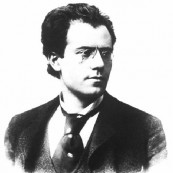








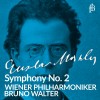
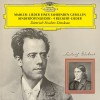




![The Top 100 Masterpieces of Classical Music 1685-1928 [CD10of10]](http://static.classicalm.com/repository/collection-cover/small/1362-img1372449071864441.jpg)
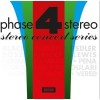
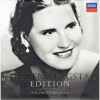
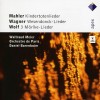
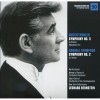
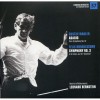
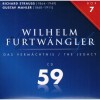
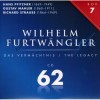
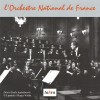

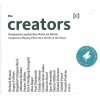
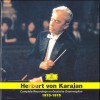
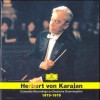
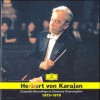

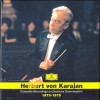
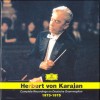
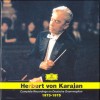
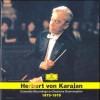
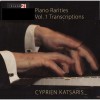
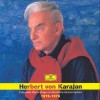
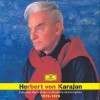

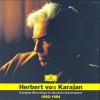
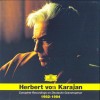
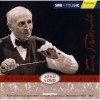

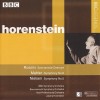
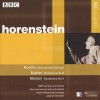

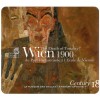
![Anthology of the Royal Concertgebouw Orchestra: Live the Radio Recordings 1960-1970 [CD13]](http://static.classicalm.com/repository/disk-cover/small/3450-img1395226388718281.jpg)
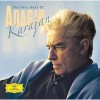
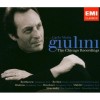
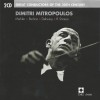

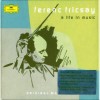
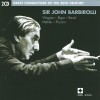
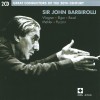

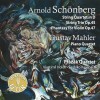
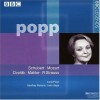




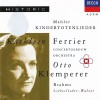
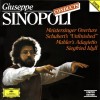


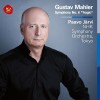
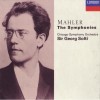
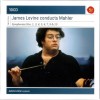


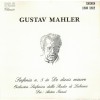


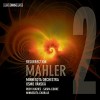
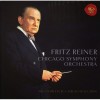
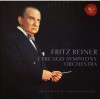

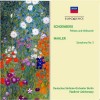


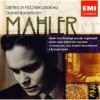


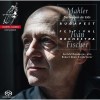

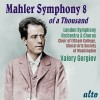
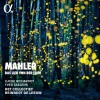
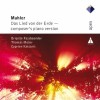

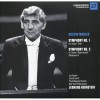
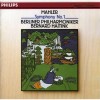
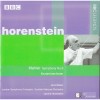



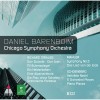
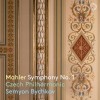
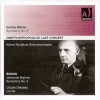
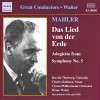
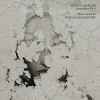
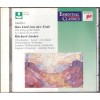
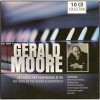

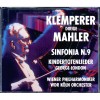
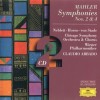
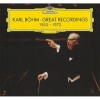
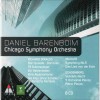
![Mahler - Symphony No.8 [Stokowski, 1950]](http://static.classicalm.com/repository/composition-cover/small/20788-img1409297464430173.jpg)
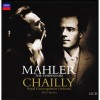



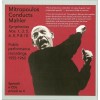
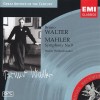
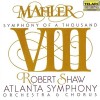

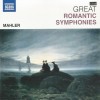
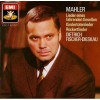


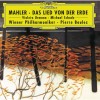
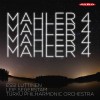

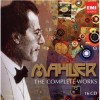


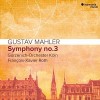

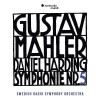
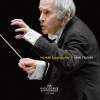
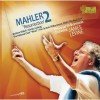

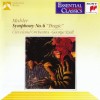
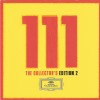
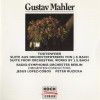

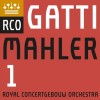

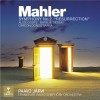

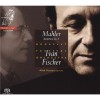



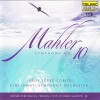

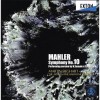
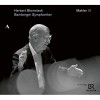

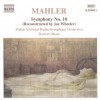
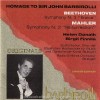


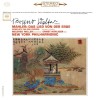
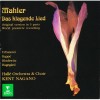
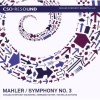
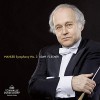

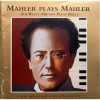
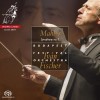
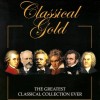

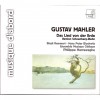
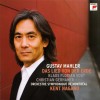
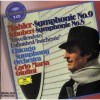
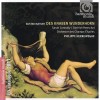
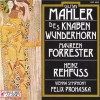
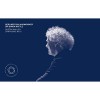
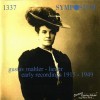
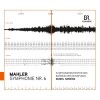

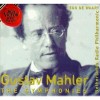
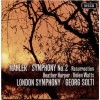

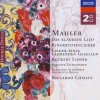

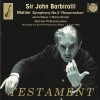
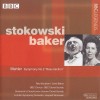
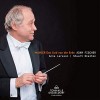
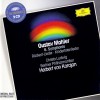
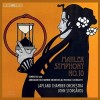

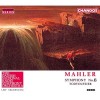
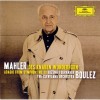

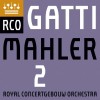

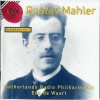

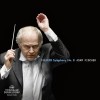
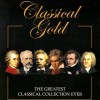
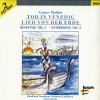



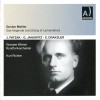

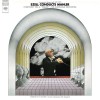

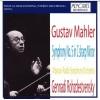
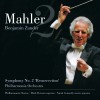


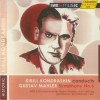
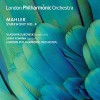
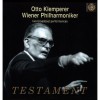
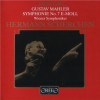
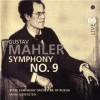
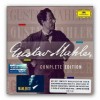
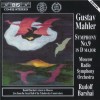

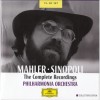
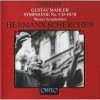


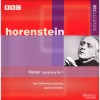

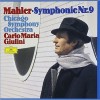

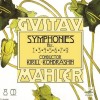
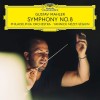
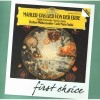
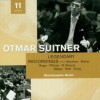
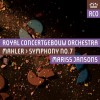
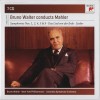
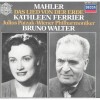
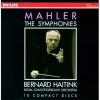

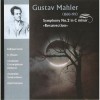

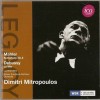
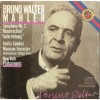

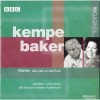

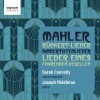




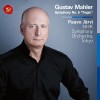
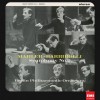
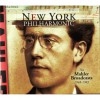
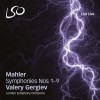
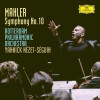
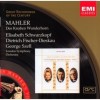





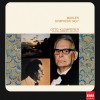

![Mahler - Symphonies Nos. 1, 5, 6 & 9; Lieder [remastered in 2020] - Janet Baker, Hallé Orchestra, New Philharmonia Orchestra, Berliner Philharmoniker, John Barbirolli](http://static.classicalm.com/repository/composition-cover/small/44742-img1676514559899408.jpg)
